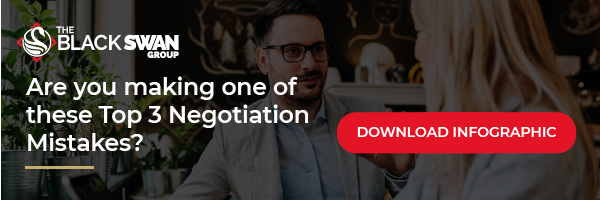How do you set a tone of collaboration that sticks—especially with someone that sees the negotiation as win-lose, and they want you to lose?
It’s easier than you might think.
The secret to gaining the upper hand in negotiation is simple: Give the other side the illusion of control.
Collaboration isn’t about control. It isn’t passive, either (but cooperation is).
In reality, effective collaboration is about gaining the upper hand while still preserving the other side’s autonomy. Never forget this: People will die before they give up their autonomy.
Collaboration is about guidance, deference, and getting out of the sequential move game entirely. Great collaboration starts with taking a quantum leap past the sequential move game and actually past any so-called “game theory.”
Let the Other Side Think They’ve Won
Negotiation has been described as the art of letting the other side have your way. In a high-stakes negotiation, the other side is dying to talk to you. They very badly want to throw out their ideas and make their case, and you need to let them. It’s that simple.
People are much more likely to implement a deal that came out of their mouth. When that happens, they feel ownership and they remember the details. They feel as though they got their way.
But what's most important is what happens after yes.
Yes is nothing without how. Profits don’t come when a deal is signed. They come when a deal is implemented.
How will the other side feel about implementing a deal if they feel they lost, if they feel they didn’t get enough input to impact the deal, or they feel they weren’t treated fairly?
How to Get the Upper Hand in a Negotiation
The key to getting and then keeping the upper hand in a negotiation starts with using calibrated questions that begin with what and how.
Things like: What did you have in mind? and How do you want to proceed?
You can take it to the next level by using corresponding labels to produce the same effect and get at the same type of response.
|
Calibrated Question |
Corresponding Label |
|
What do you have in mind? |
Seems like you’ve got something on your mind. |
|
What’s the main challenge here? |
Seems like there is one single looming challenge. |
|
What are you up against? |
Seems like there is something you’re up against. |
|
What’s your single most binding constraint? |
Seems like there is one specific thing that’s holding you back. |
|
How do you want to proceed? |
Seems like you’ve got some ideas on how to proceed. |
|
What are the next steps? |
Seems like you’ve got a feel for what has to happen next. |
Let the other side go first. A very significant percentage of the people you are dealing with will feel as though they are in control. As such, they are much more likely to be relaxed—making it easier to talk themselves into your deal.
If your gut instinct is to push back against this, then guess what? You are one of the people who are vulnerable to dropping their guard when they’re given the feeling of control.
And if they want to take you in a direction you don’t want to go?
After you’ve summarized the situation and gotten a that’s right, the gentle and elegant phases of no are called for (and in this order if need be):
- “How am I supposed to do that?” (Spoken with deference.)
- “I’m sorry, I’m afraid I can’t do that.”
- “I’m sorry, I’m afraid that just doesn’t work for me.”
- “I”m sorry, no.”
The critical aspect of then cementing the collaborative relationship here is then your use of tactical empathy to get a that’s right out of them.
Summarize, stick to it, get the that’s right response, and good things will happen.
Video: Summary: The Key to Tactical Empathy
The really cool thing is that if you don’t get your summary exactly right, the other side will correct you!
People love, love, love to correct other people. In this light, getting a summary wrong will actually enhance their desire to work with you.
Keep driving to get it right. You’ll end up with the upper hand, and you’ll experience the outcomes you’re aiming for.

